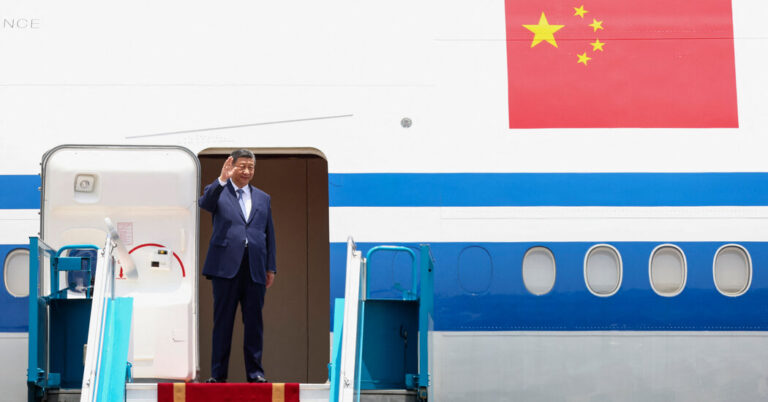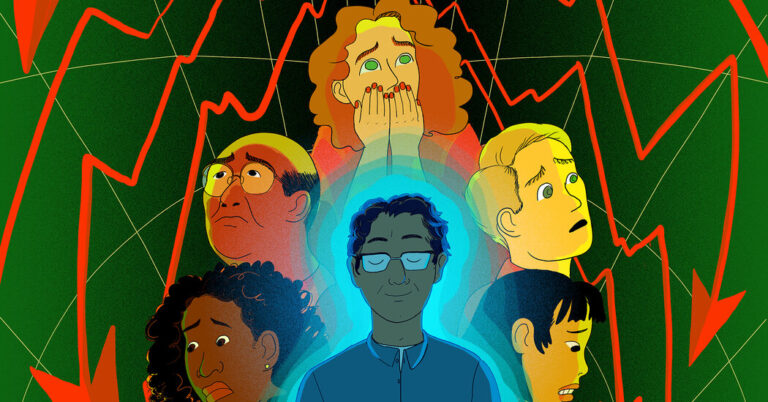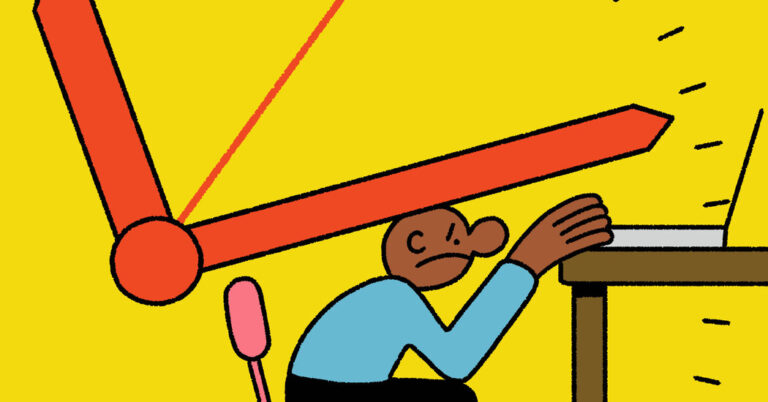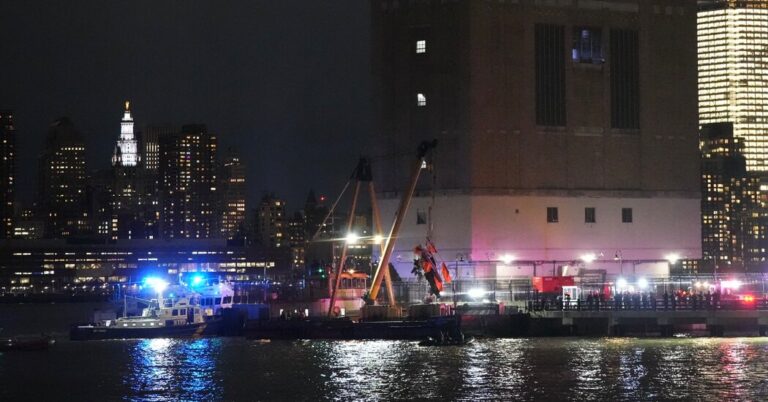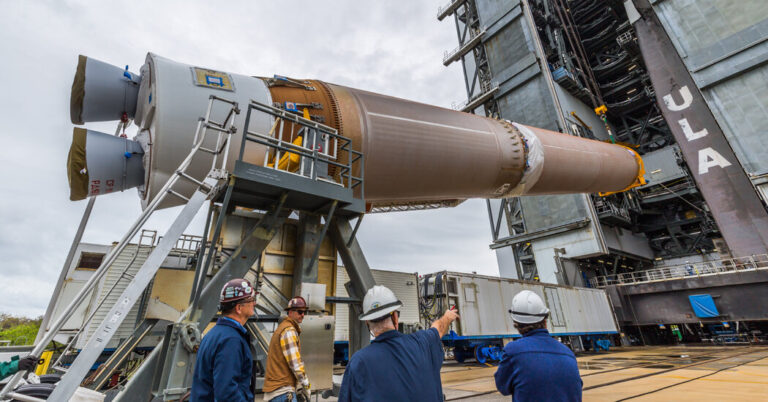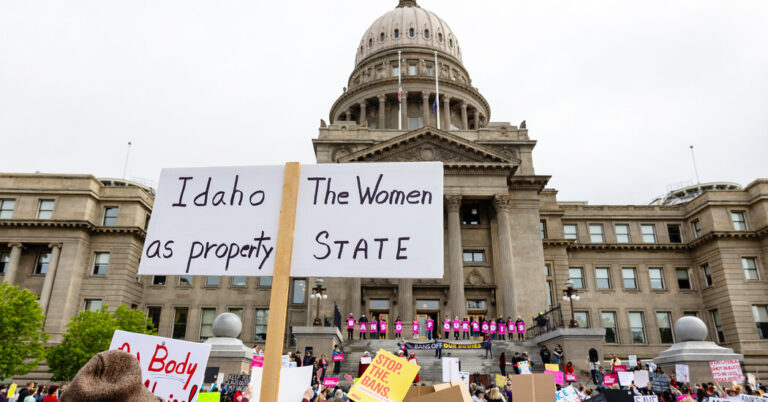Three years later, Khadija Zaidi-Rashid still remembers the screams of other passengers, the unsettled expression on the flight attendant’s face and the helplessness she felt holding her infant on her lap.
Dr. Zaidi-Rashid, 34, then a doctoral student, was flying from Washington to Doha, Qatar, with her mother and two children when their airplane encountered severe turbulence. Her other child, a toddler, was in a seat next to her, and the half-hour of roller-coaster shaking and bucking felt like hours. Since then — though everyone emerged unscathed — she cannot get over the sense of worry on every flight she takes.
“The turbulence has caused me to feel claustrophobic, all kinds of motherhood-related anxiety,” she said, adding that she no longer sleeps during flights. She’s worried that her children, now older, will slip out of their seatbelts they are now required to have. She often keeps her hand on them as a precaution.
She’s not alone. In recent months, after a series of terrifying plane crashes and accidents on the tarmac, parents have swarmed online message boards and lit up group chats to unload their anxieties about upcoming flights and longstanding safety norms for family travel.
The accidents, which included a midair collision in Washington and a flipped-over plane in Toronto, have fueled concerns about whether young children on airplanes, particularly infants, are sufficiently protected. The worry has compelled some parents to rethink how they fly, with many considering options ranging from bringing car seats to canceling trips.
Keeping Babies Safe in the Air
Holding your small child on your lap has been acceptable in air travel for decades. The practice, which airlines allow for travelers under 2 years old to fly free or at a steep discount, saves parents or caregivers airfare. Parents list convenience and their child’s comfort as other key motivators.
But the safety of the practice has been debated for decades.
Aviation safety agencies around the world have made their position clear: Children are safest in airplanes when they’re secured in their own seats in approved child restraint systems, such as car seats certified for airplane use.
“Your arms aren’t capable of holding your in-lap child securely, especially during unexpected turbulence,” the Federal Aviation Administration warns on its website. The European Union Aviation Safety Agency states that several studies have concluded that child safety seats provide “a level of safety equivalent to that provided to adult passengers.”
Pediatricians, flight attendants and academics agree. They emphasize the elevated risks of lap children becoming injured. They could be struck by the in-flight service carts or by objects falling from the luggage bins.
A 2019 study in the journal Pediatric Emergency Care found that of about 114,000 medical events that occurred on flights between 2009 and 2014, more than 12,000 included children. Of these, roughly 2,000 involved lap children, making them more than “twice as likely to sustain an in-flight injury compared with other in-flight medical events.”
But if parents want to use car seats or other safety equipment on board, the rules differ by airline (or even by the seat in the aircraft). What equipment is available also can vary. Some airplanes have bassinets, which can be requested but not guaranteed on the day of travel. Not all car seats fit on smaller planes. In Europe, infant seatbelts that secure a child to a parent are available, though they aren’t permitted in the United States and Canada because of concerns that a child’s abdomen could be severely injured by the seatbelt or the parent. There are even rules that infants cannot be worn in carriers during takeoff and landing, the most dangerous periods of a flight.
Lack of Legislation
The official language from the F.A.A. about children flying in laps is only a warning, with no legal weight. Legislation even to authorize a new study of children’s safety while flying, introduced in Congress nearly two years ago, has stalled.
The lack of federal regulation about lap children gives parents “the wrong assumption that if it’s allowed it must be safe,” said Jan Brown, a former United Airlines flight attendant.
In 1989, Ms. Brown survived an airplane crash in Iowa in which 111 of 296 people on board, including passengers and crew, died. Flight attendants advised parents to place their children by their feet, the standard safety guidance at the time. There were four lap infants on the flight and one, a 23-month-old, died.
It is incredibly rare for any passenger to die in a commercial airplane accident, and aviation remains far safer than driving. This was the conclusion of a study on car seat use in airplanes conducted in 1994 by the F.A.A. The report maintained that while car seats were the safest place for children to be, requiring parents to purchase an extra seat would deter them from flying. Instead they’d resort to driving, a statistically more lethal form of transit.
However, there hasn’t been substantive research into whether a significant number of families would drive rather than fly because of the cost of buying a seat for their infant, said William McGee, a senior fellow at the American Economic Liberties Project, a nonprofit research and advocacy group.
“It should be noted that at no time has the F.A.A. actually studied its own theory,” he said. “Instead it has always just been assumed, without any statistical analysis, surveys, public comments or meaningful research, which runs contrary to federal government rule-making procedures.”
Lia Tuso, an expert in aviation child passenger safety, said that child safety remains a “deficiency in the airline industry.”
Airlines generally don’t note the safety risks of lap children on their websites, just that they are allowed.
Hannah Walden, a spokeswoman for the trade group Airlines for America, said in a statement that U.S. airlines “follow the guidance and regulations set by our safety regulator, the Federal Aviation Administration.”
But a palpable shift in the culture, Ms. Tuso said, may be occurring: Parents are becoming increasingly aware of the risks, using car seats and other alternatives more often on flights. They are increasingly crowdsourcing for guidance on equipment and best practices to avoid flying with their children on their laps.
Though there are plenty of rules for adults flying on airplanes, said Chelsea Nicholls, the mother of a 16-month-old child, it’s as if there are “no rules for the kids.”
Ms. Nicholls, 35, a marketing executive from New Canaan, Conn., previously believed flying with a car seat was unwieldy and impractical. Ahead of a recent flight to Florida, however, she purchased her daughter a seat and an F.A.A.-approved harness.
“I never felt like I was an anxious person,” she said. “You take your own safety for granted sometimes, but when you’re caring for a young child, so many thoughts start flooding your mind.”
Traveling to Florida, Ms. Nicholls said she felt “comfortable and safe” seeing her child strapped into her own seat, especially during the flight’s occasional bumps.
“It definitely let me relax a little bit,” she said.
Delaney and Jake Steele, of Vancouver, Wash., were on the Alaska Airlines flight in January 2024 with their daughter, Quinnette, when a door plug blew out of the cabin as the plane was ascending. They were sitting five rows back and on the opposite side of the gaping hole. Quinnette, then 9 months old, was on Ms. Steele’s lap.
The sudden loss of air pressure was the “loudest thing you’ve ever heard,” Mr. Steele, 36, said. They struggled to keep the oxygen mask on their daughter, who was screaming and turning redder by the minute.
The possibility that her child could have been sucked out of the plane didn’t hit Ms. Steele, 30, until after they landed. She has not set foot in an airplane since.
“I don’t know how comfortable I’m going to be taking little ones,” said Ms. Steele, who, along with her husband, filed a lawsuit against Alaska Airlines and Boeing, the manufacturer of the plane. The couple now has a second child, age 5 months. “Now, if we fly before they’re 2, it’s a given that they will somehow be strapped in.”
Follow New York Times Travel on Instagram and sign up for our Travel Dispatch newsletter to get expert tips on traveling smarter and inspiration for your next vacation. Dreaming up a future getaway or just armchair traveling? Check out our 52 Places to Go in 2025.



